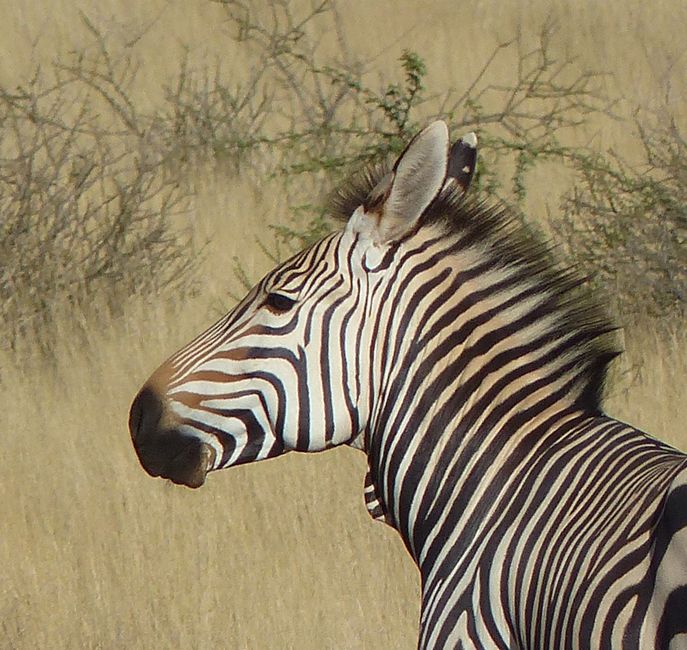Climb the Dunes
Објављено: 15.02.2023
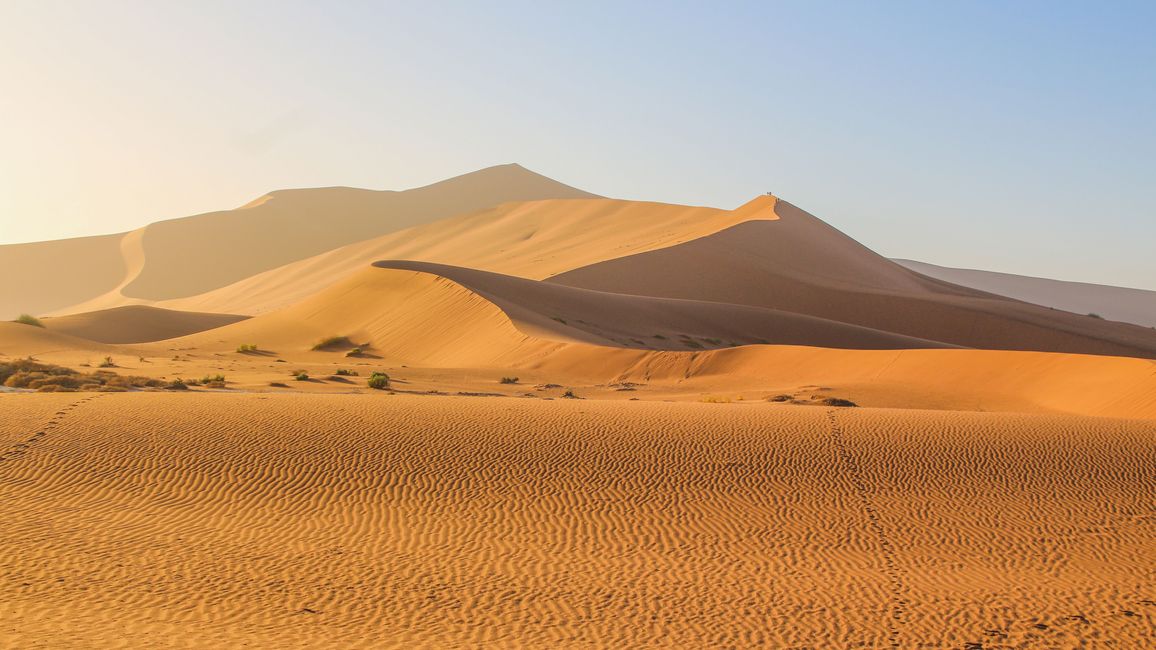
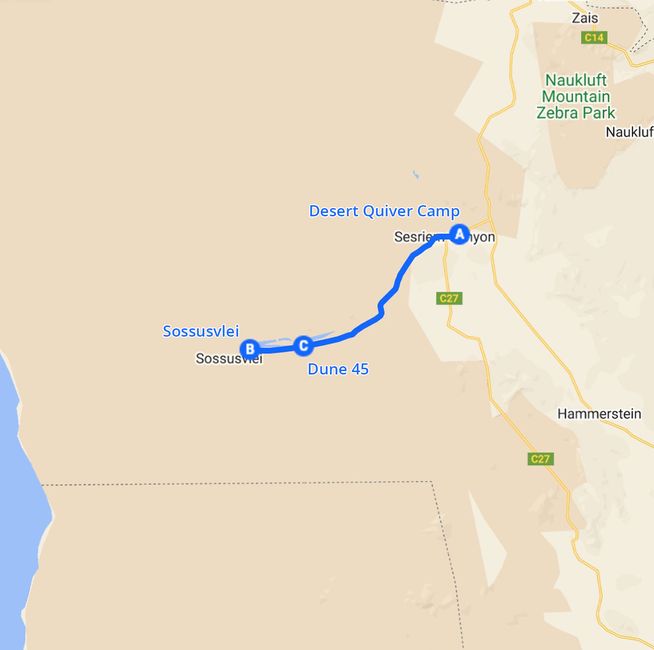
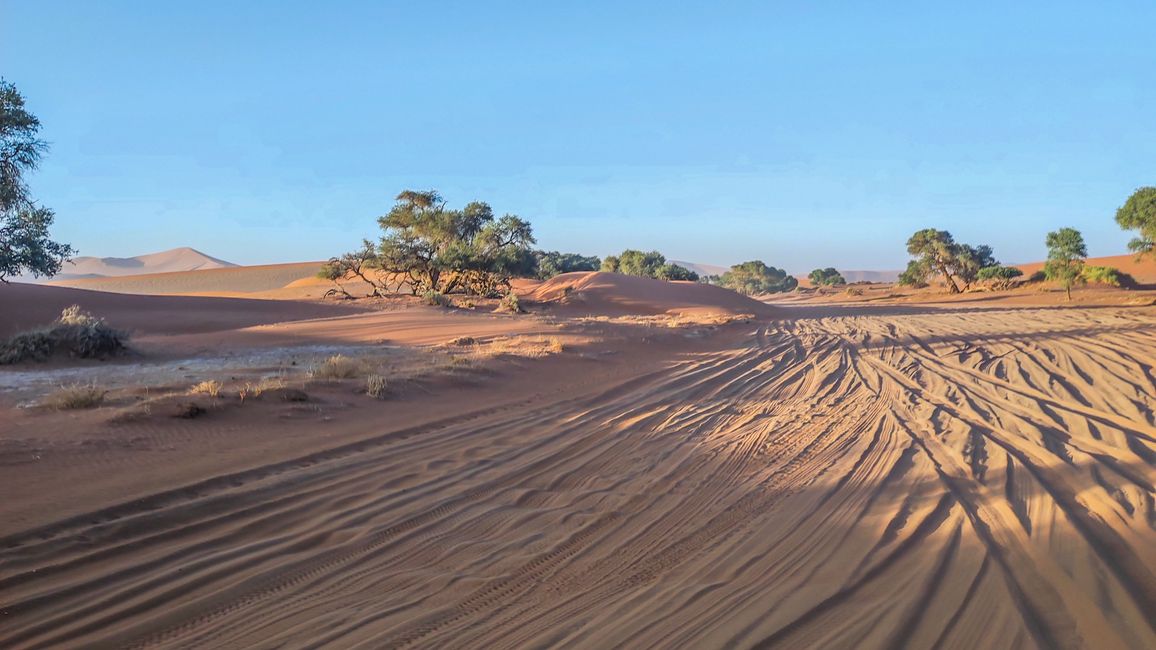
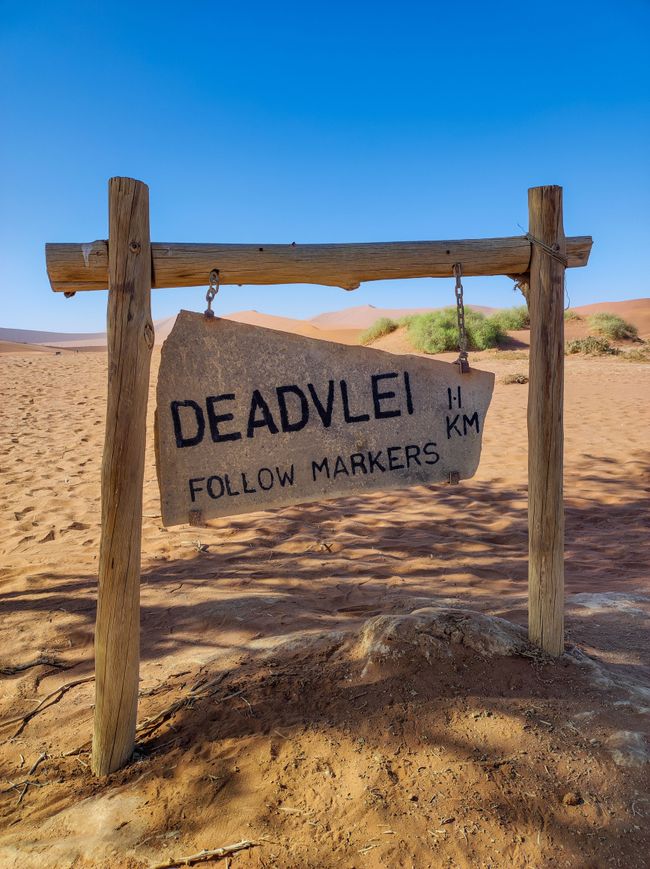
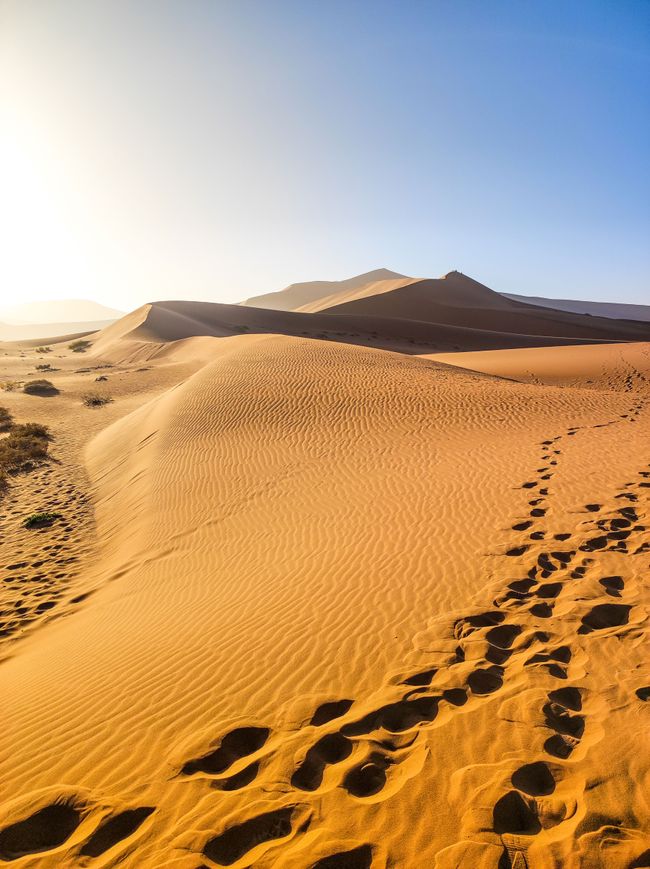
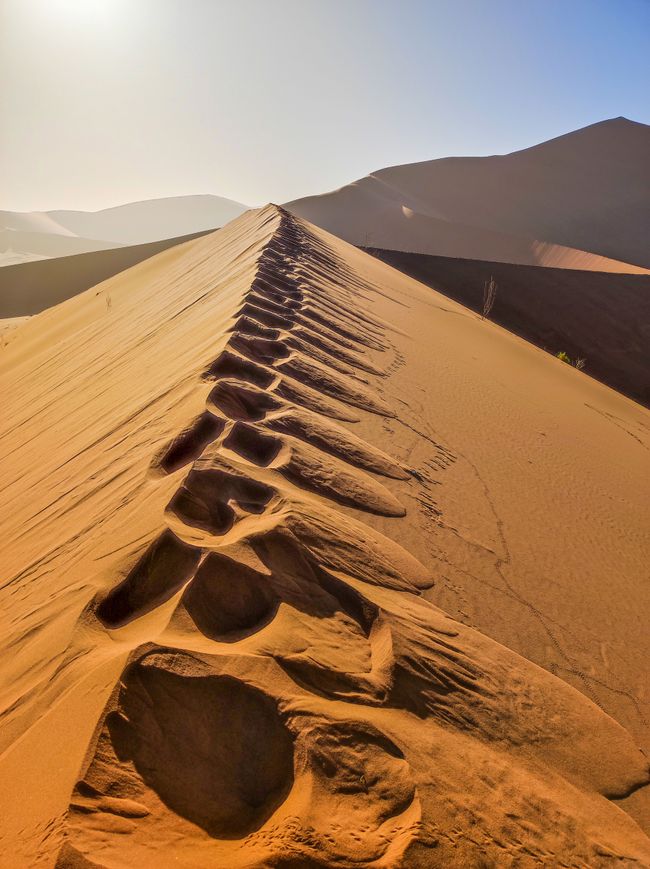
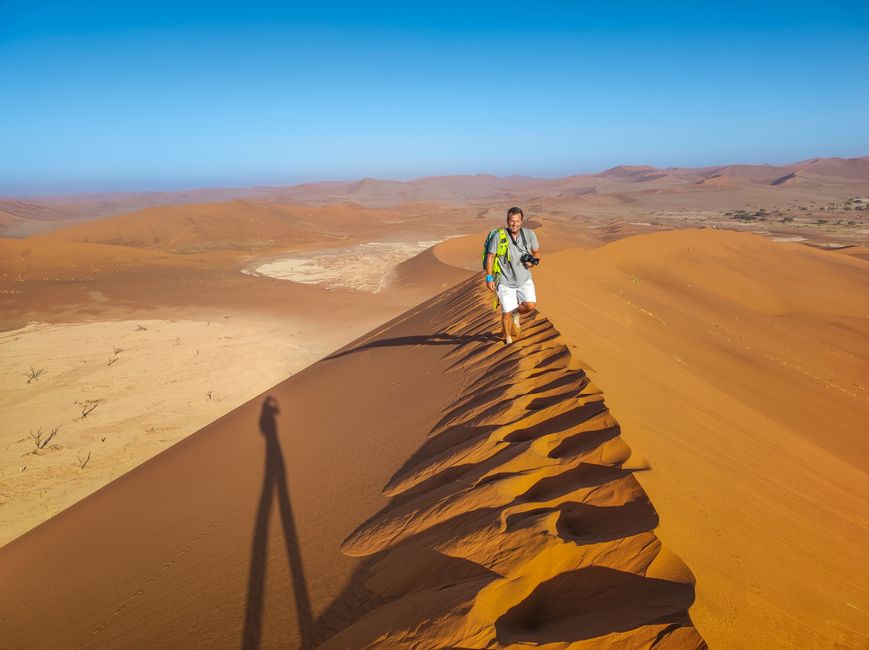
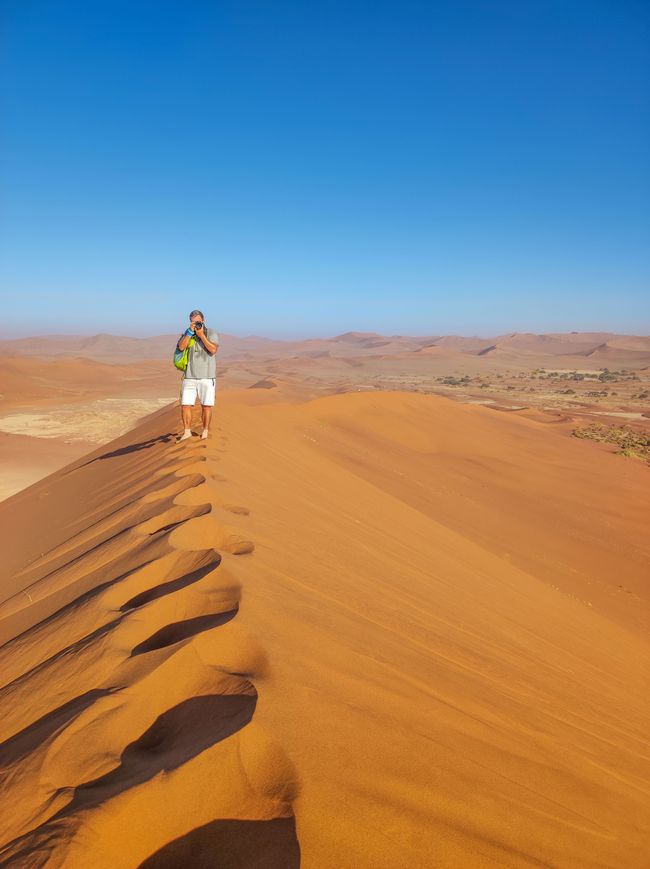
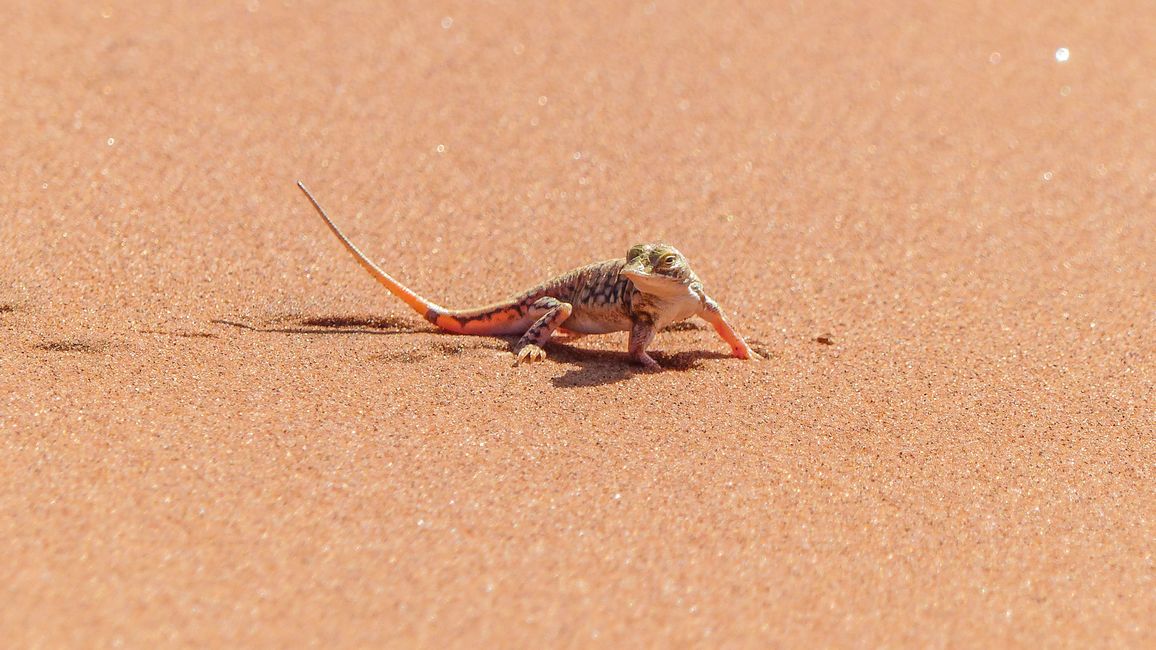
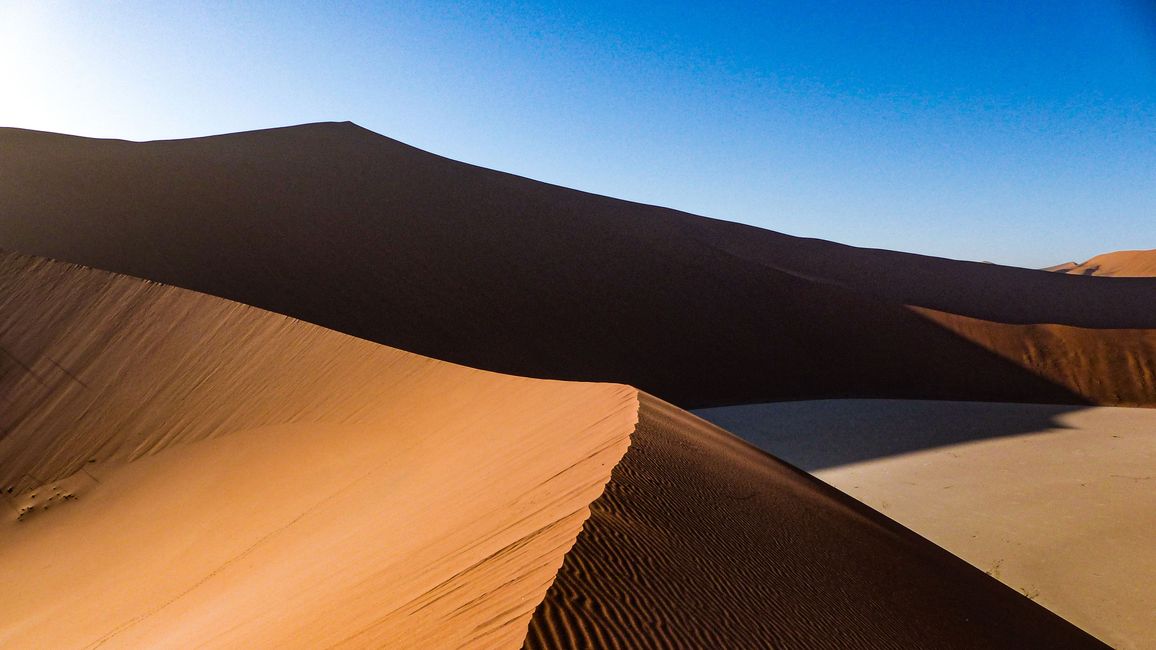
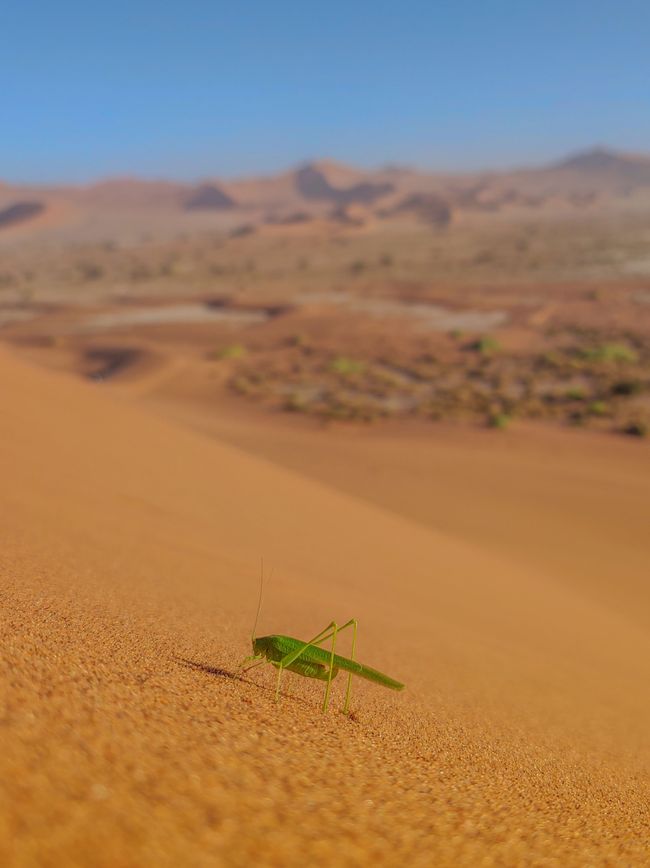
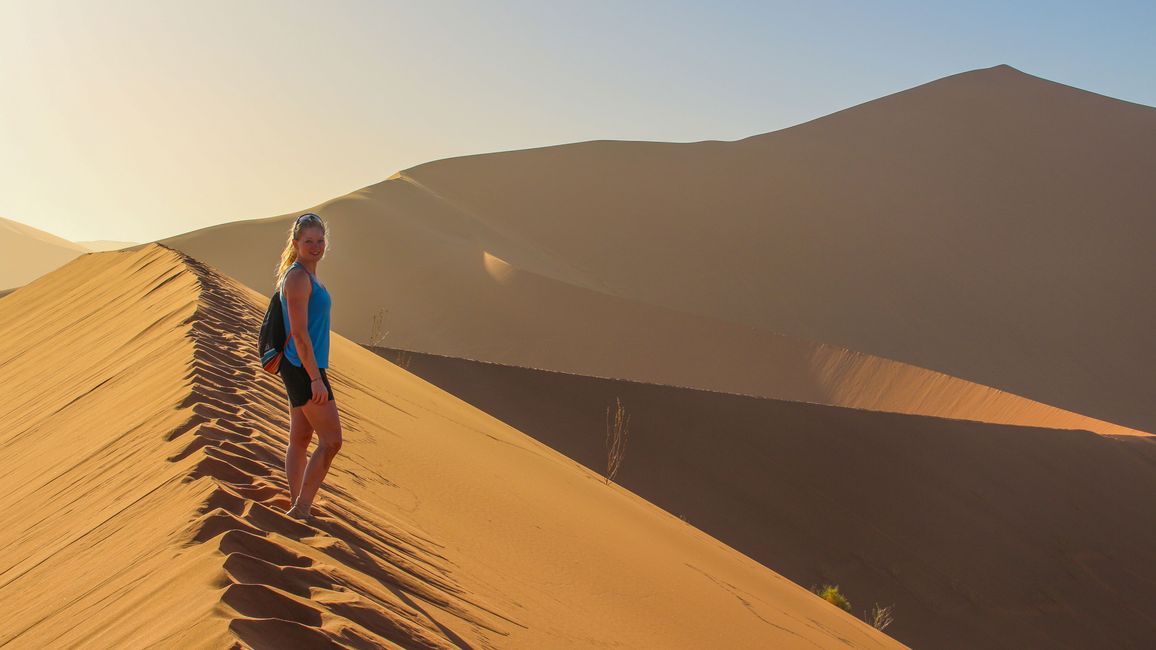
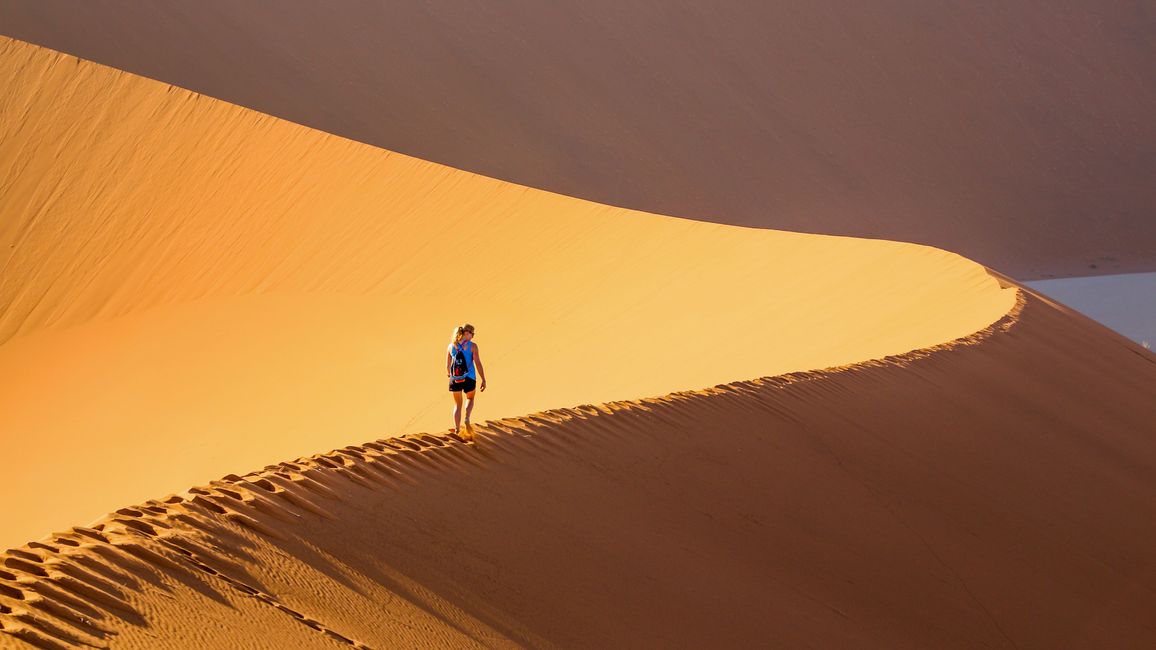
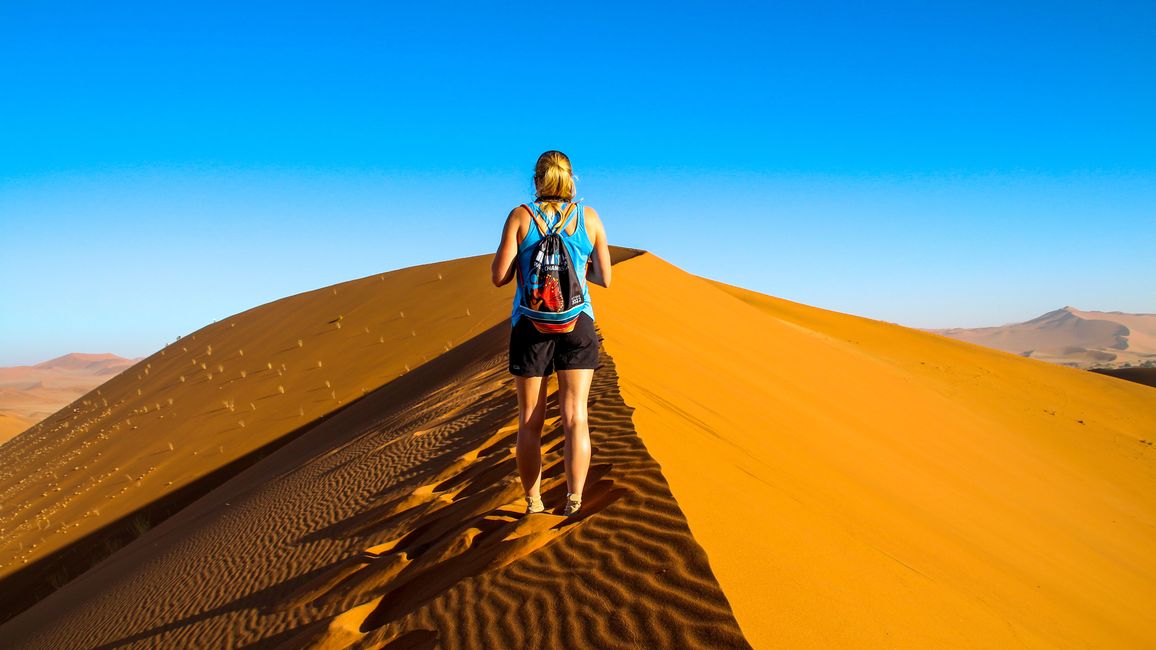
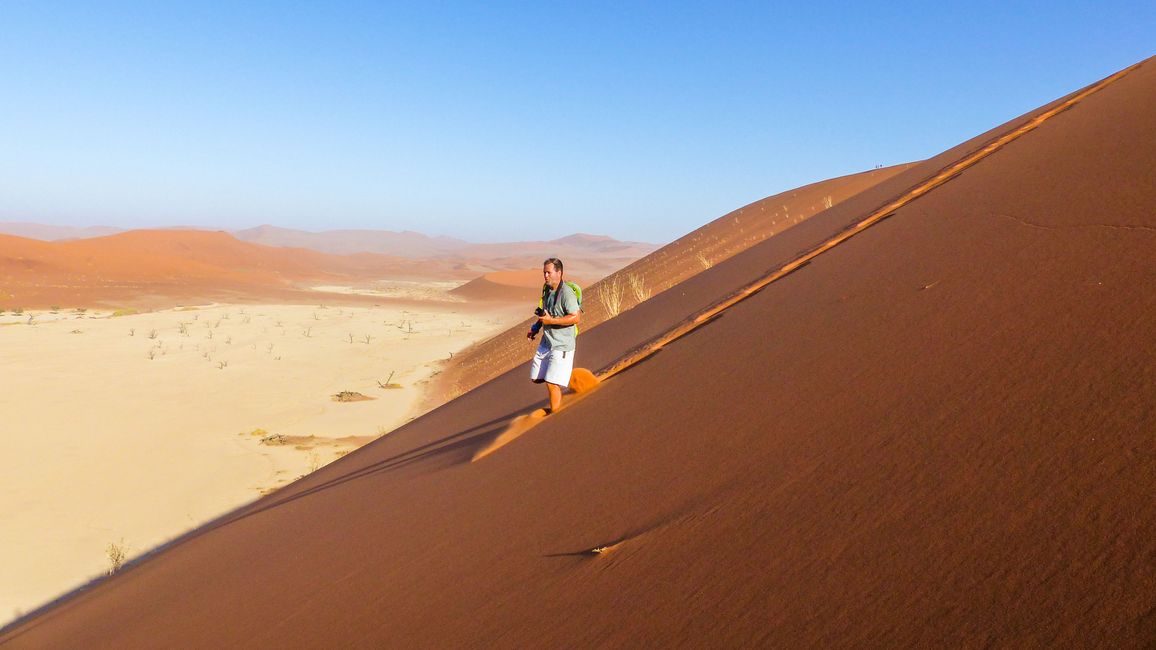
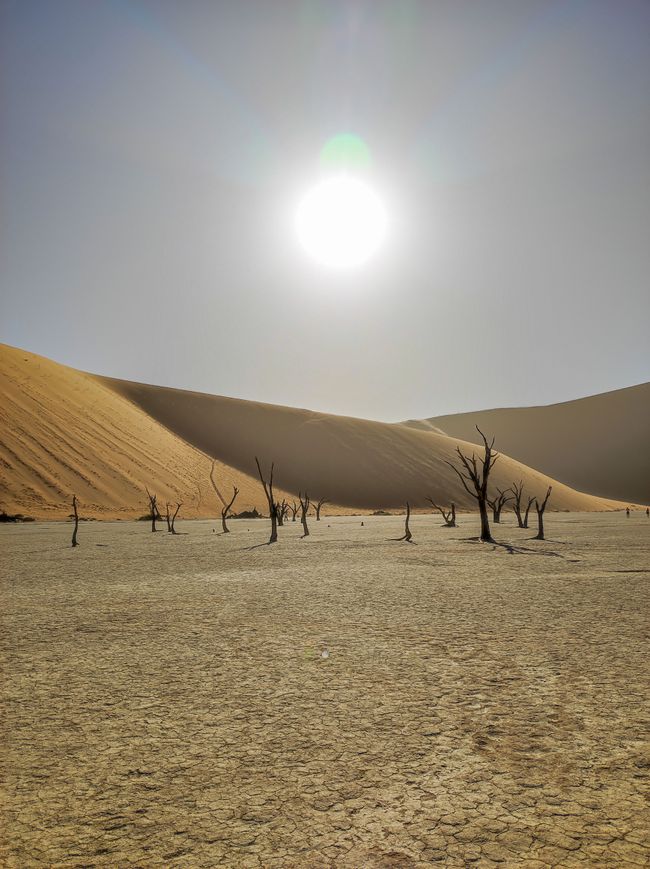
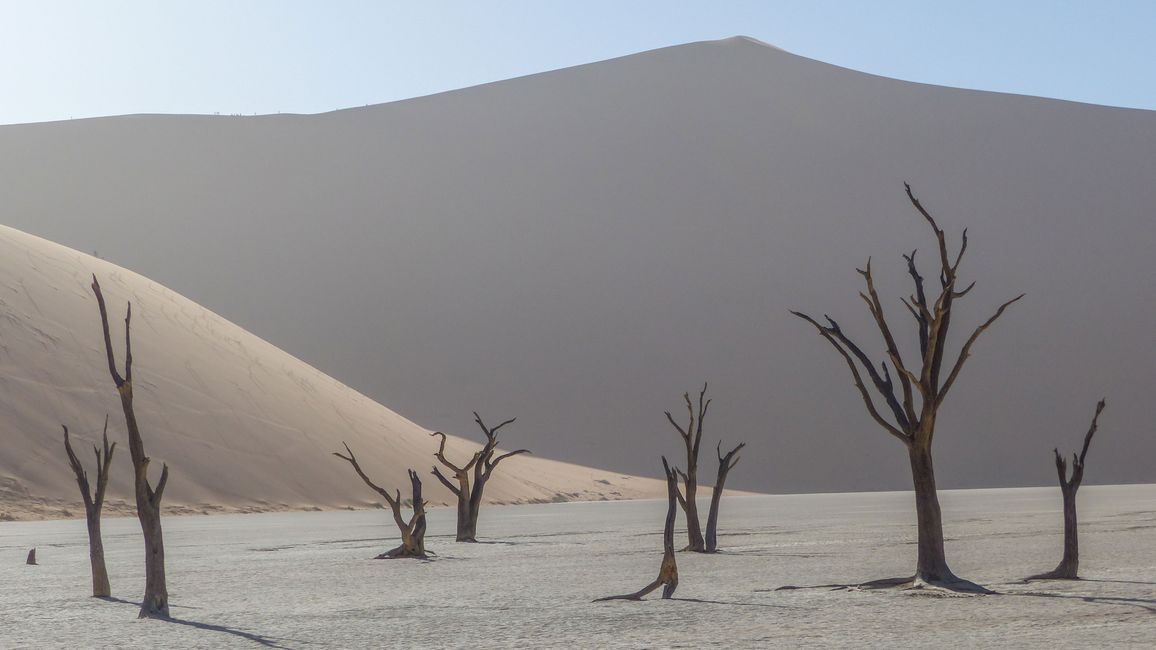
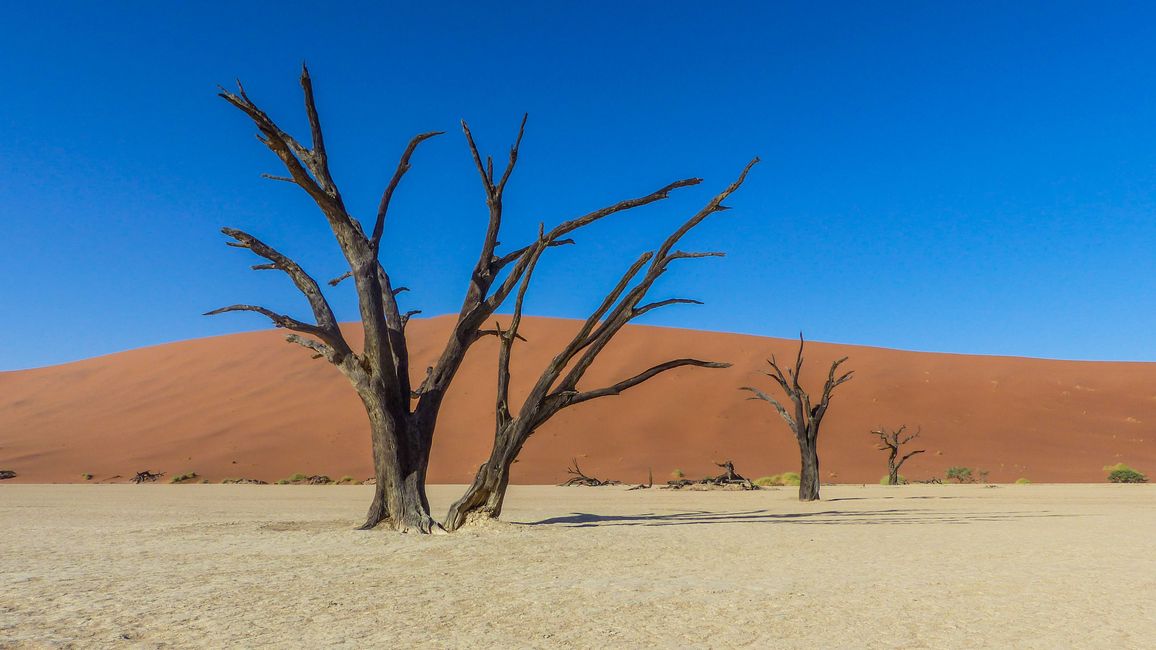
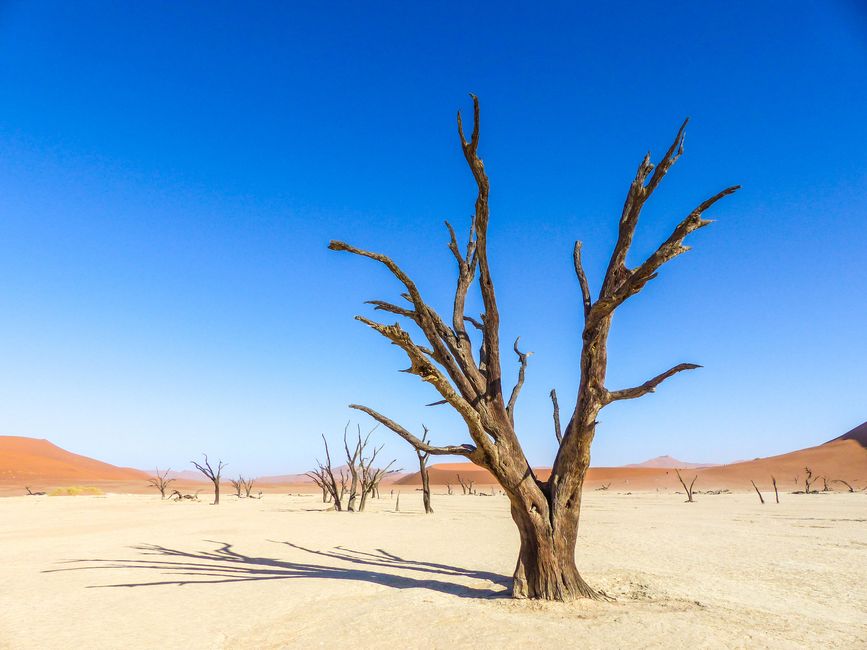
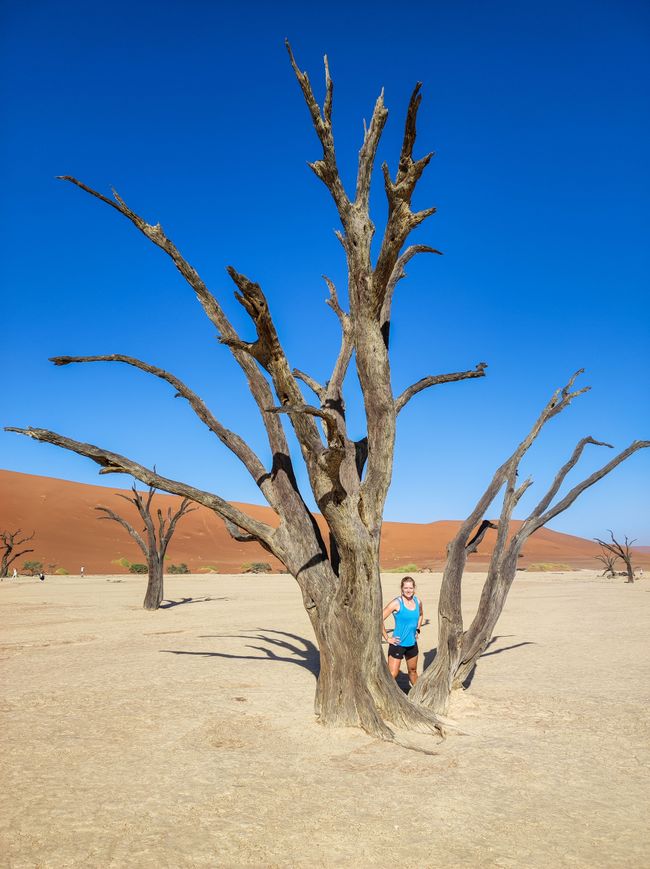
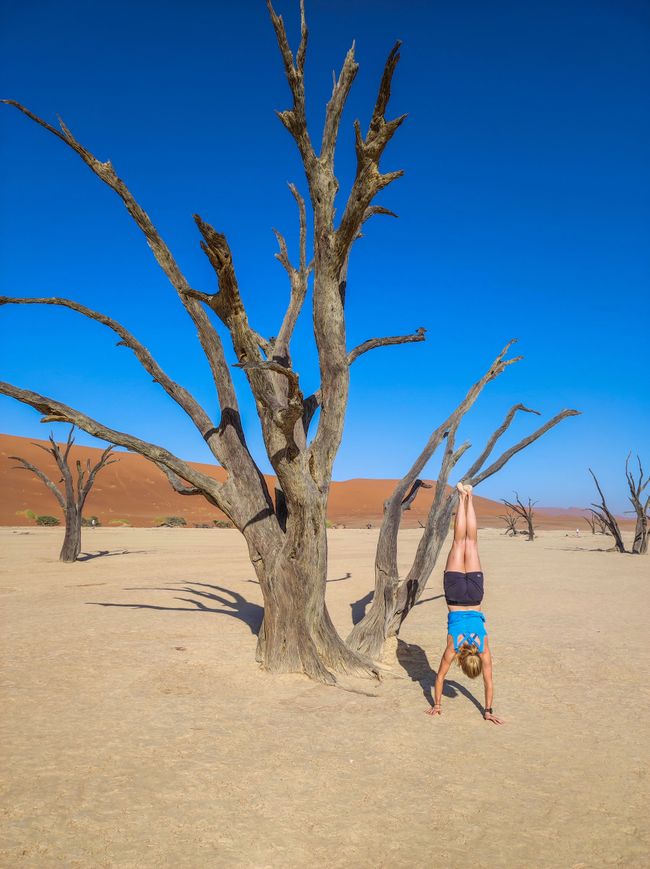
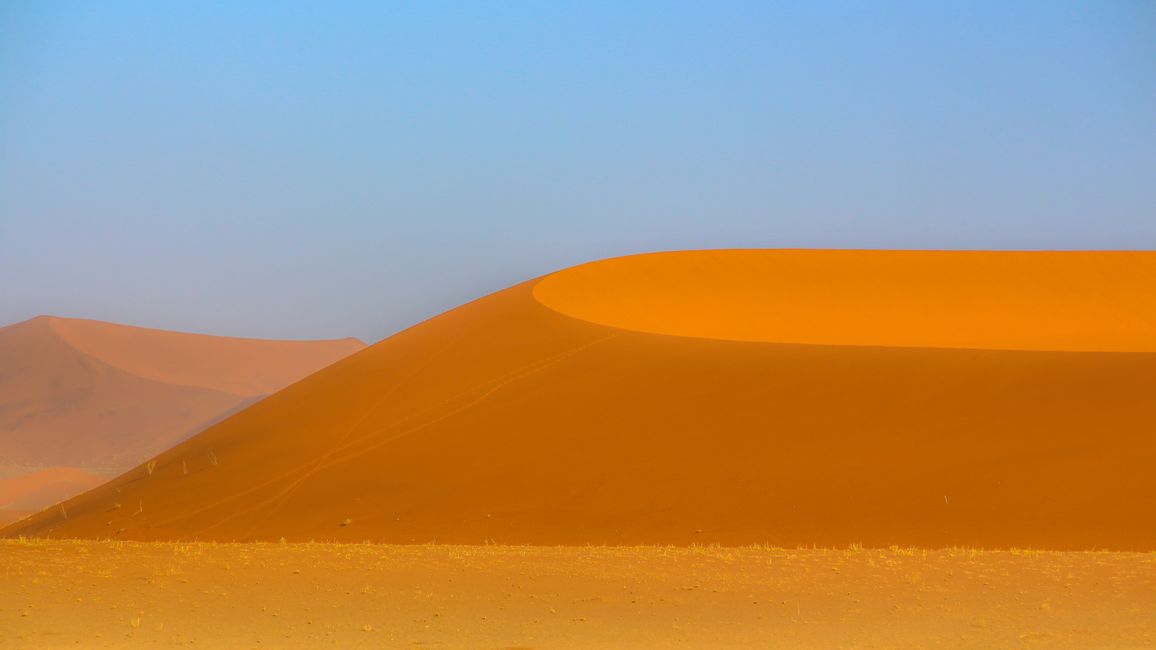
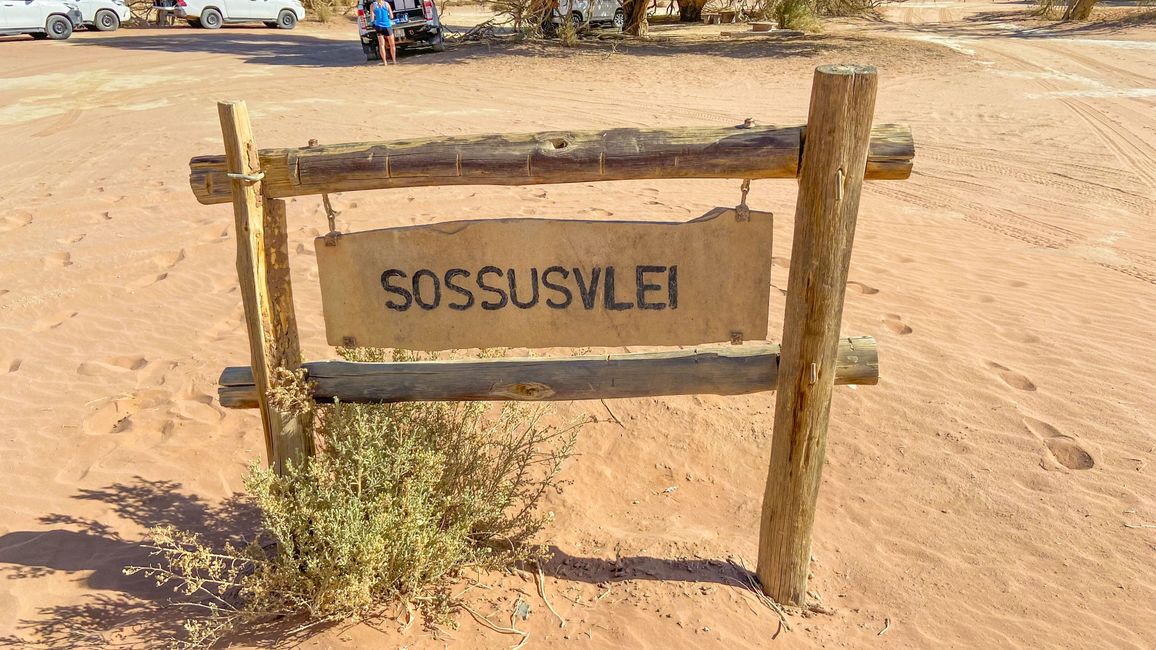
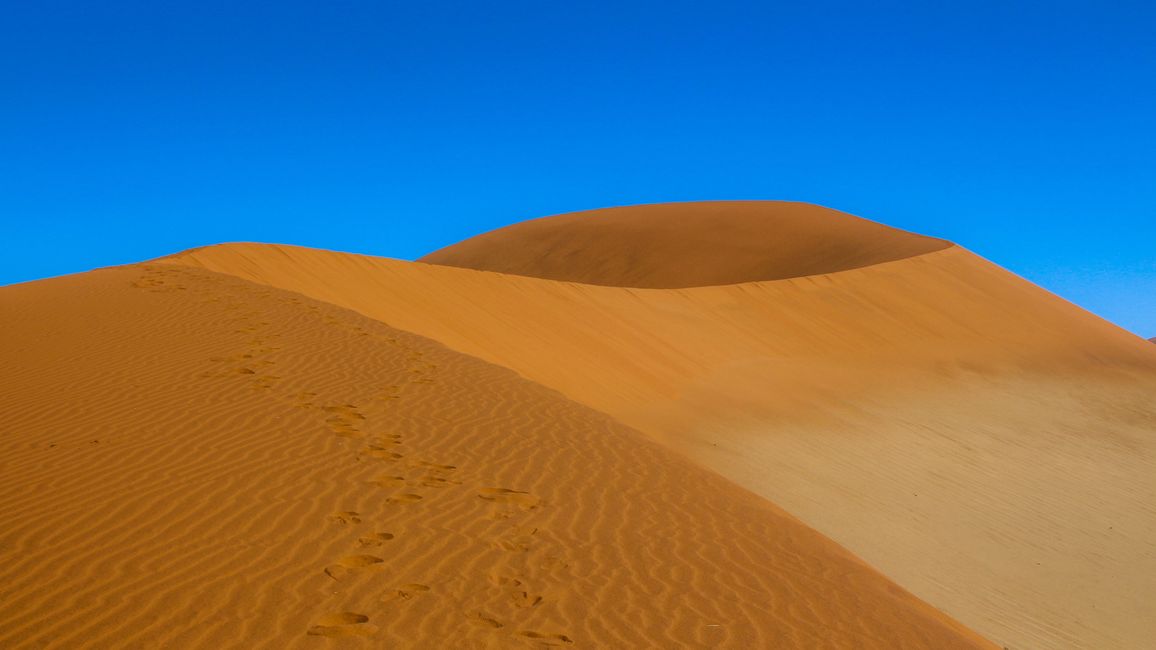
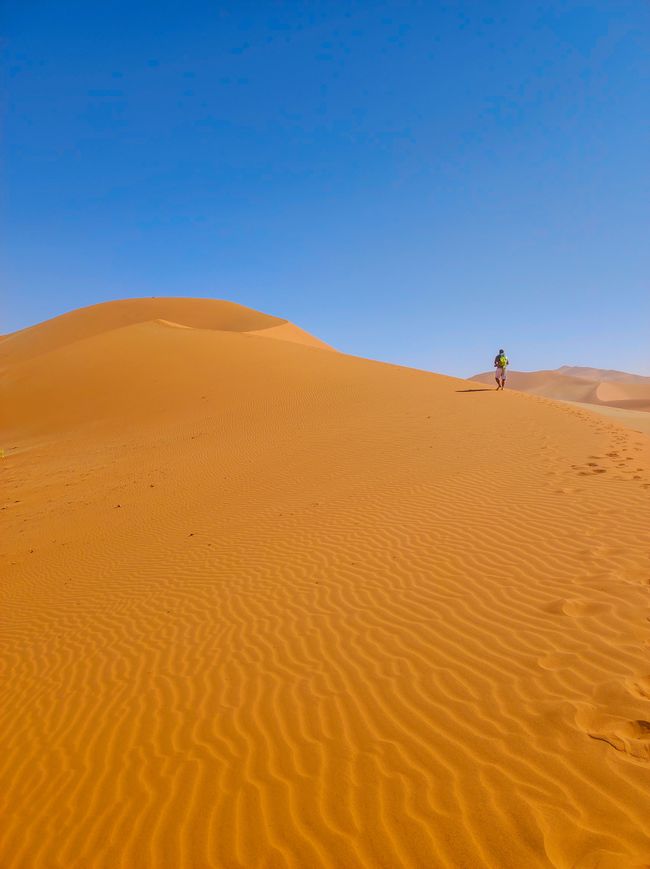
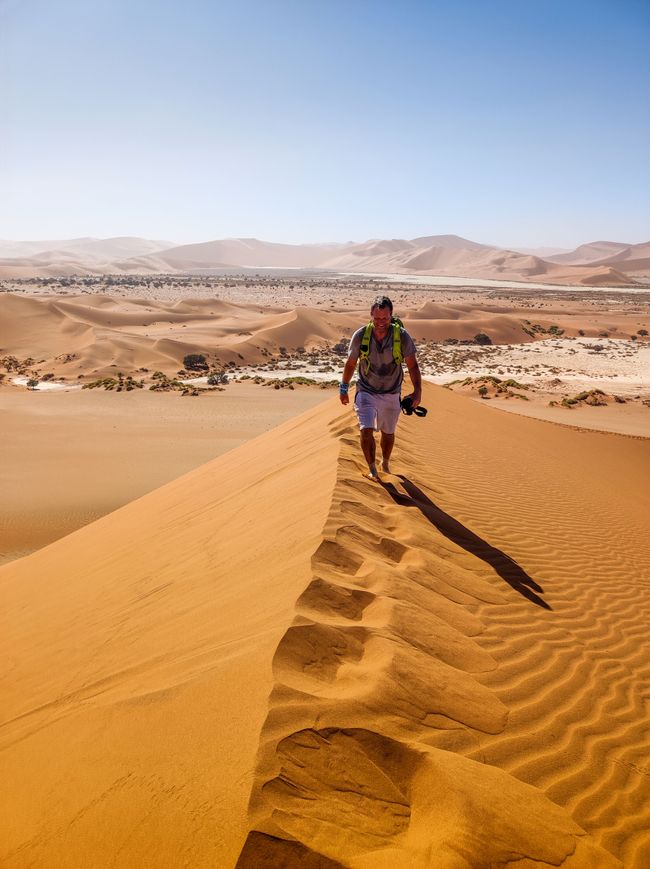
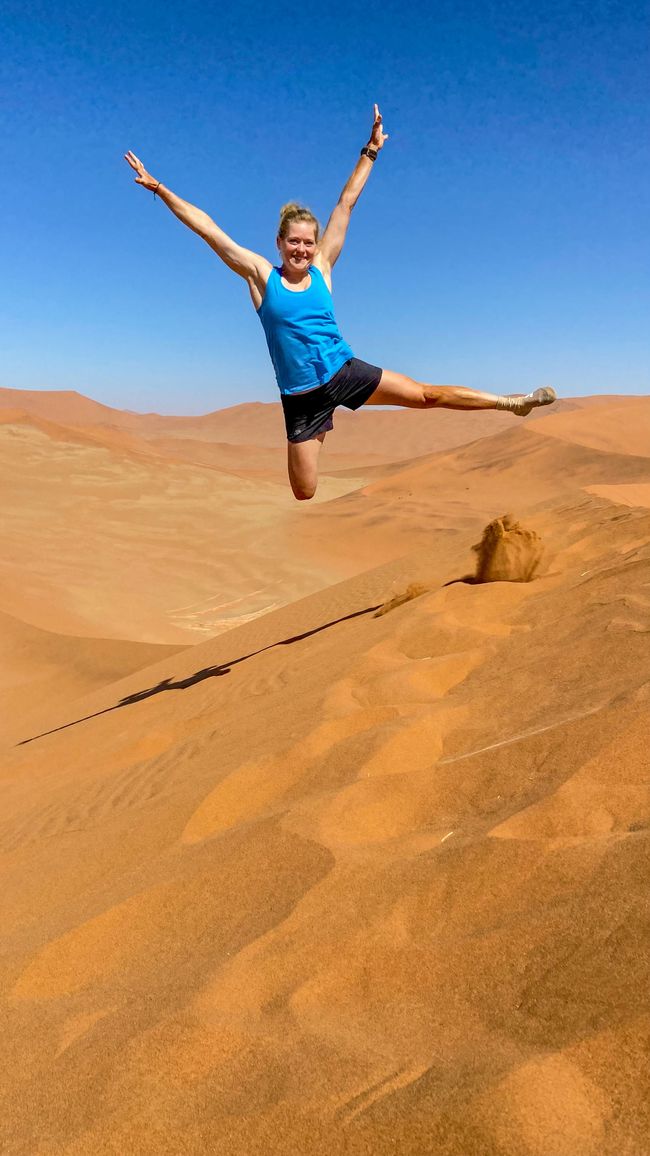
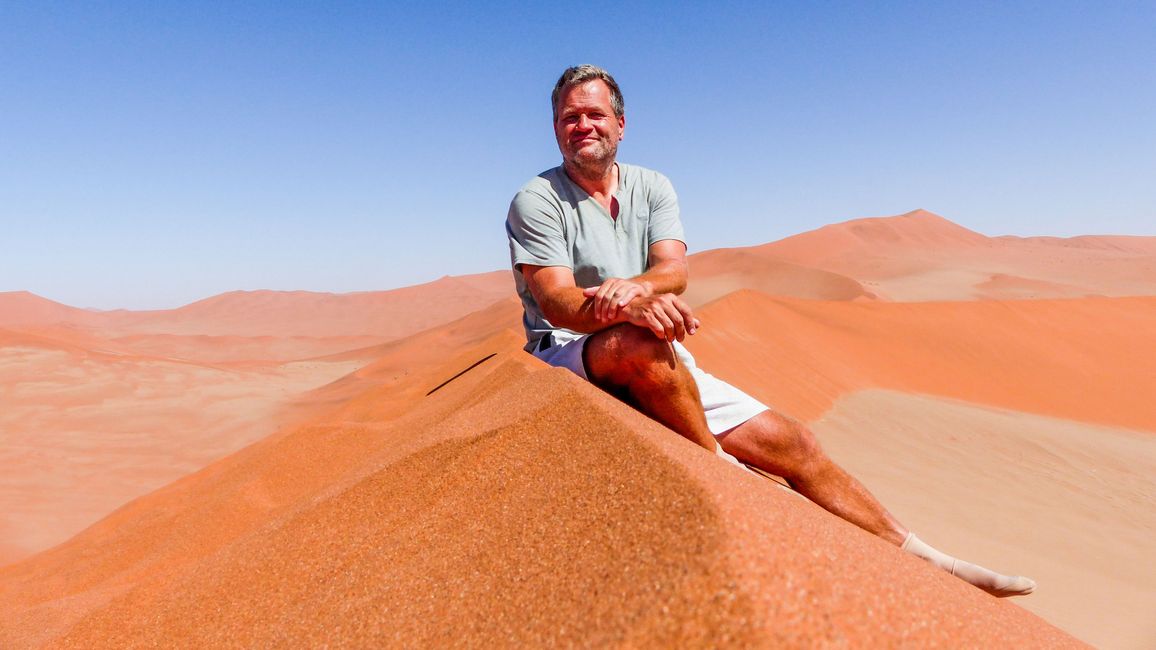
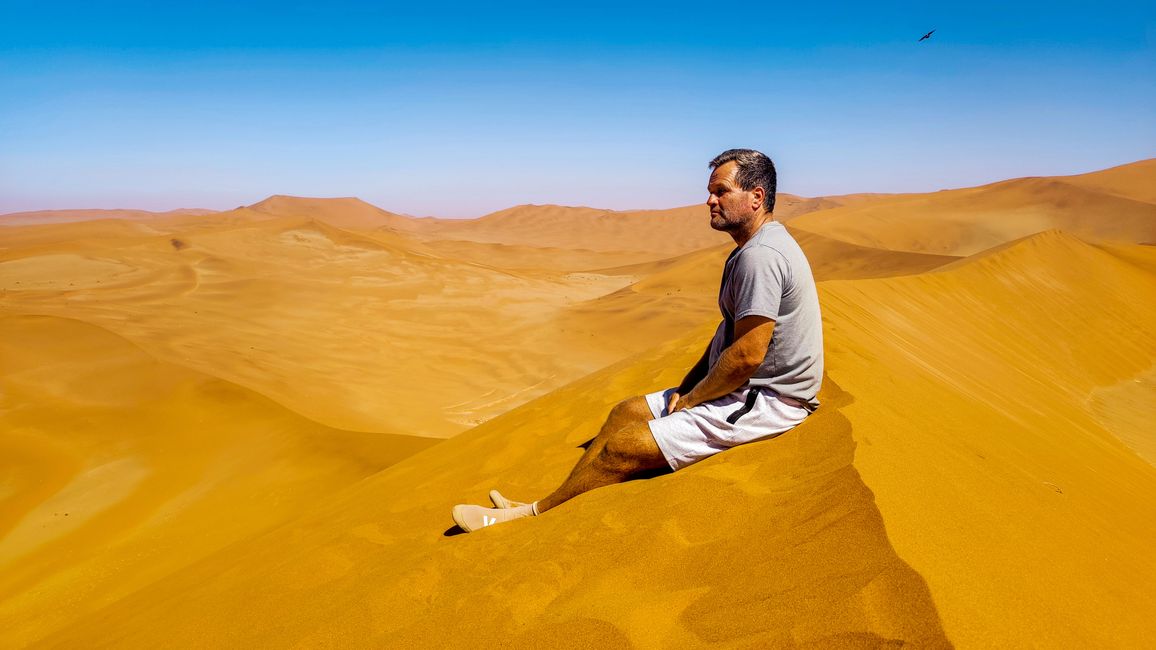
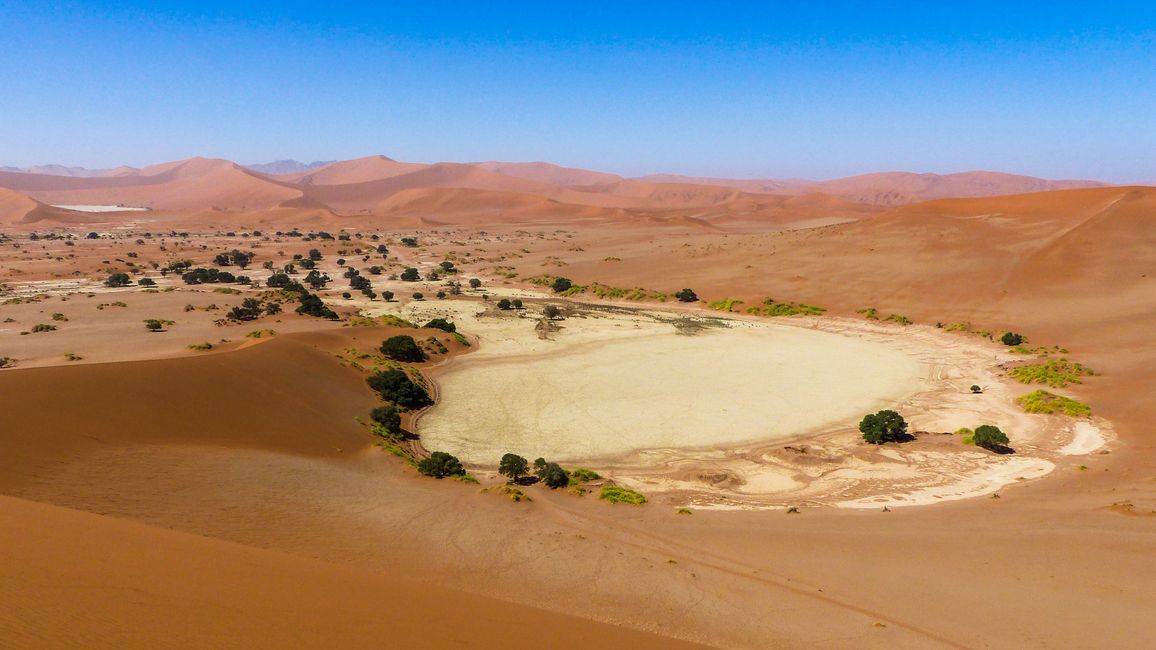
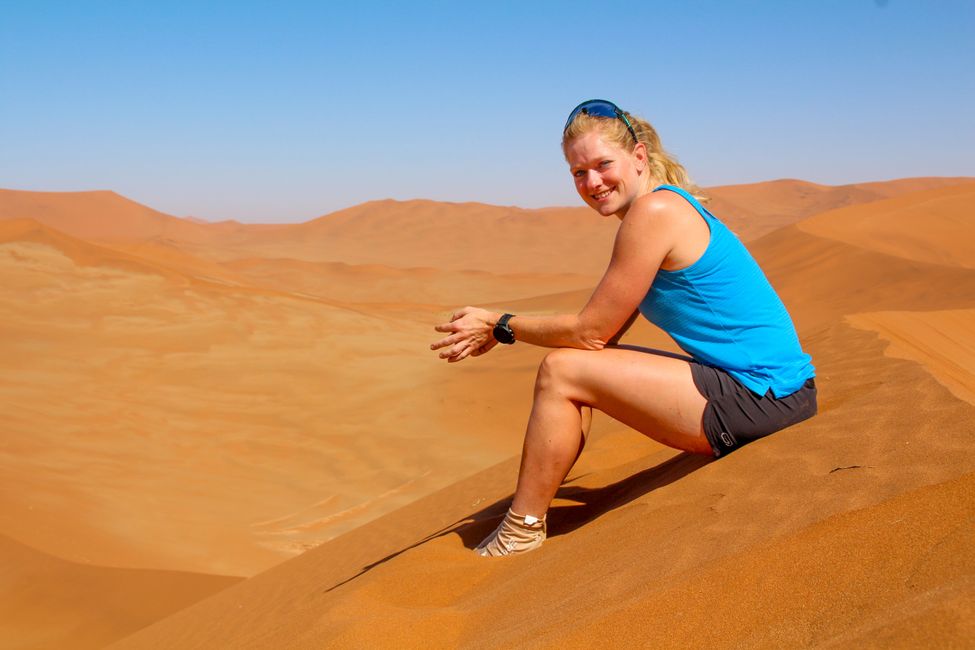
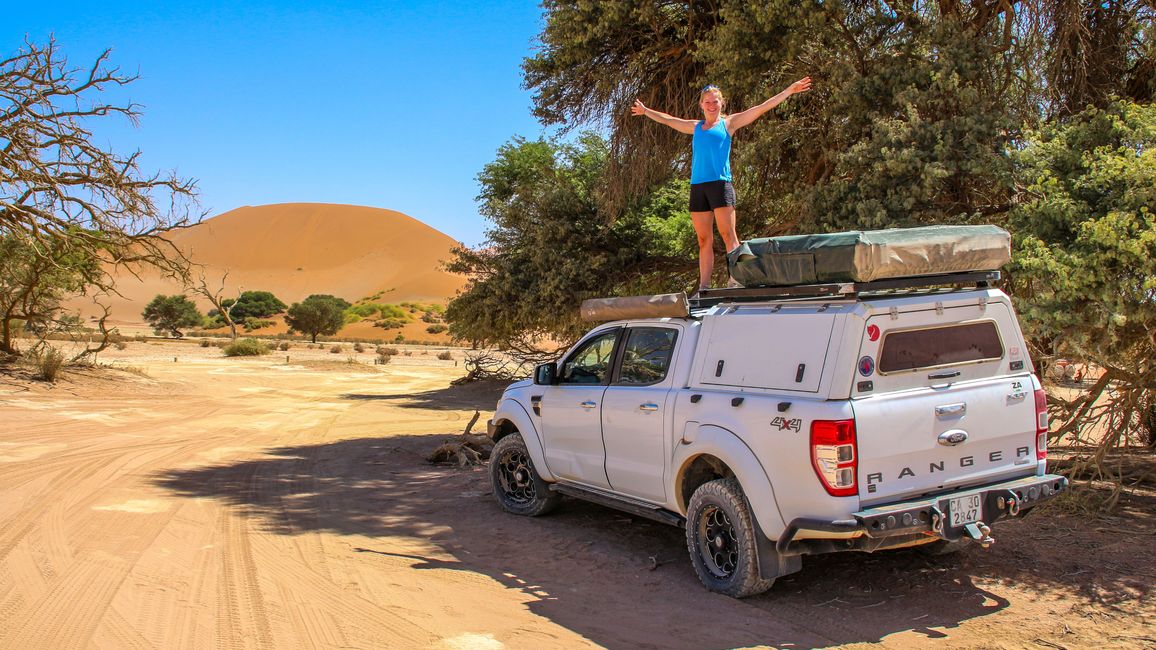
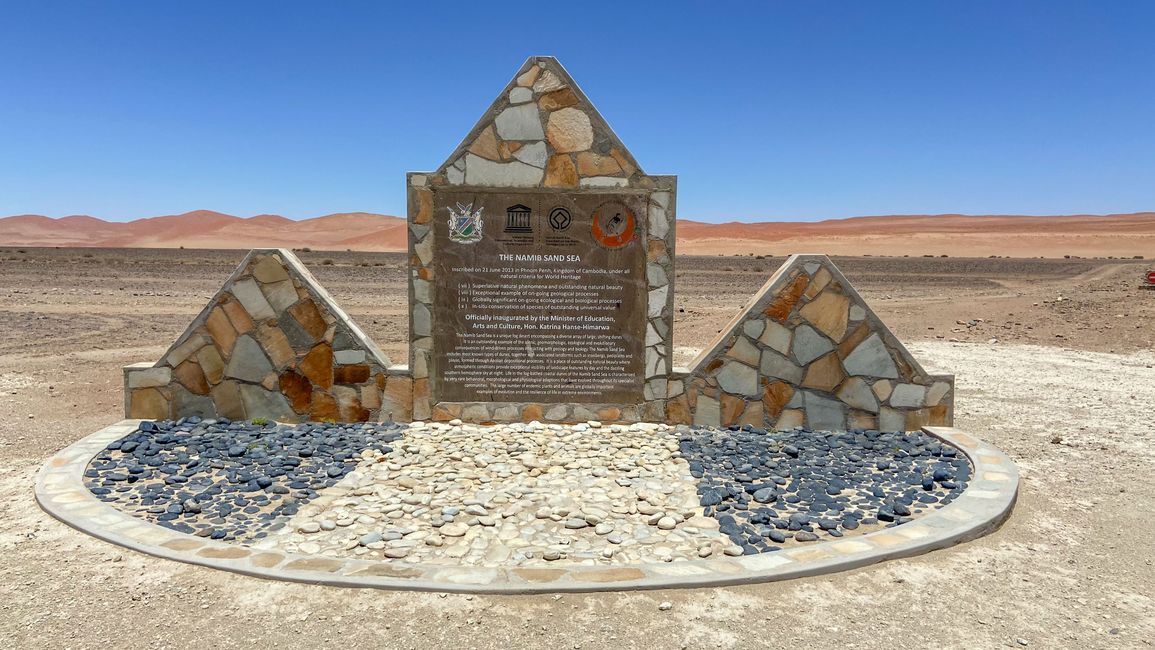
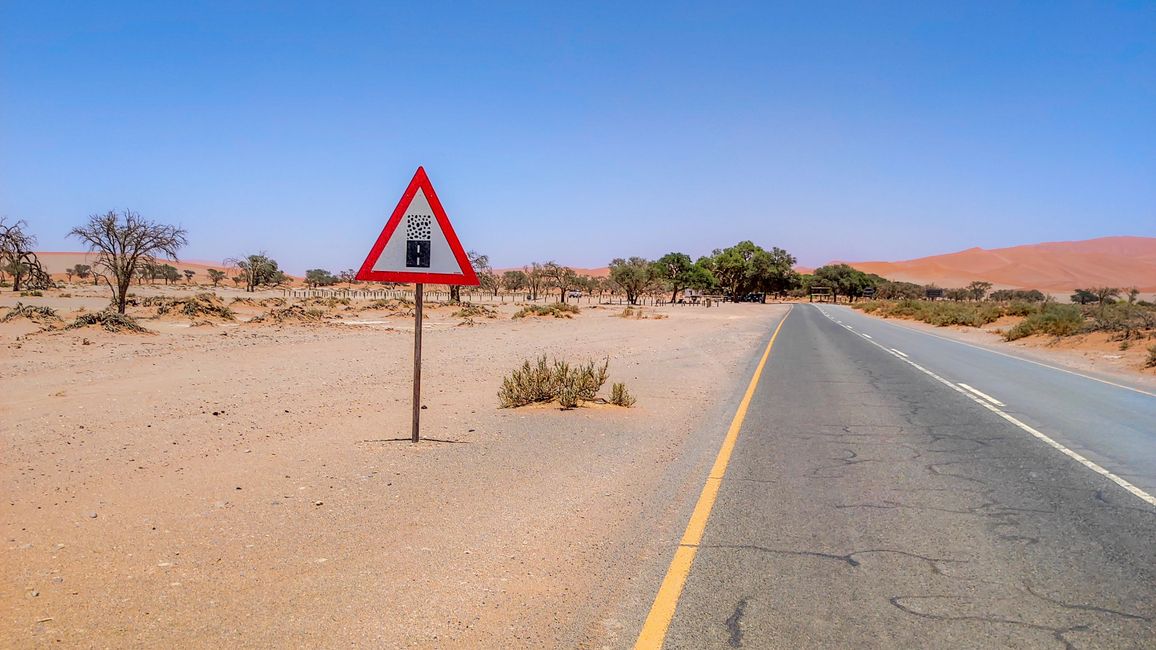
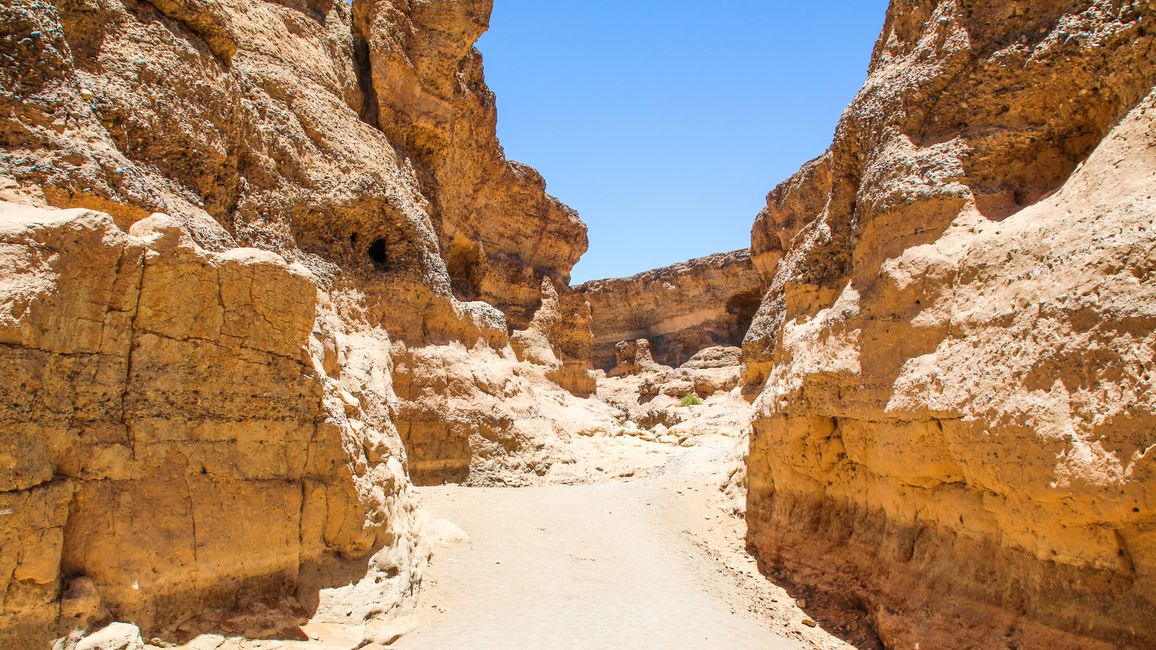
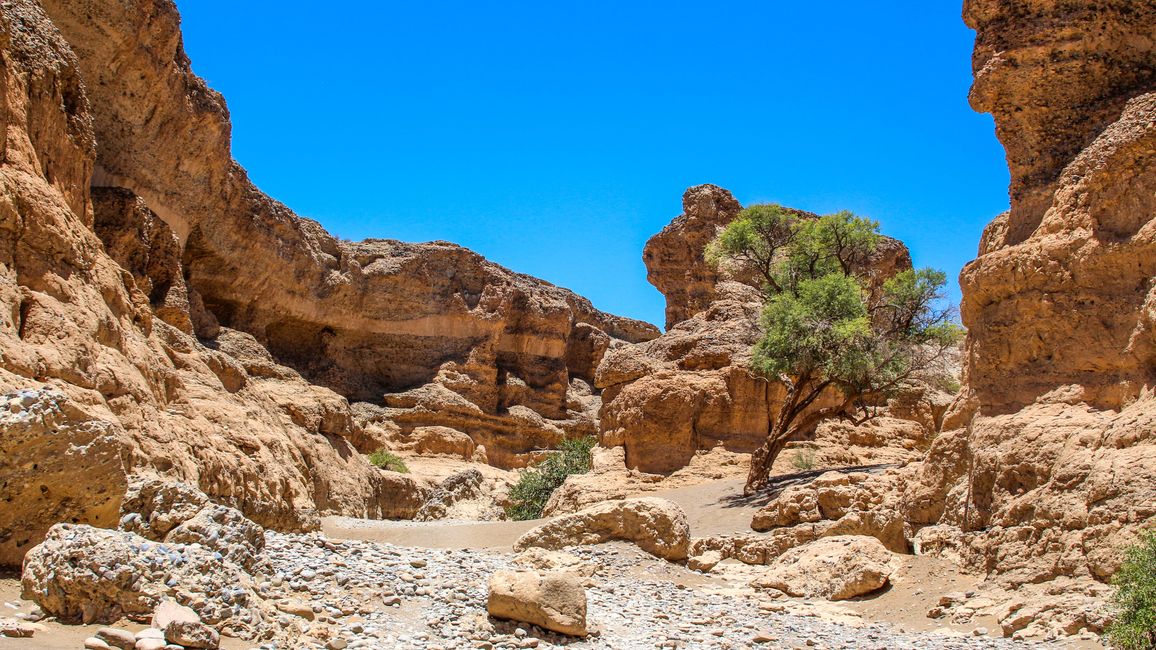
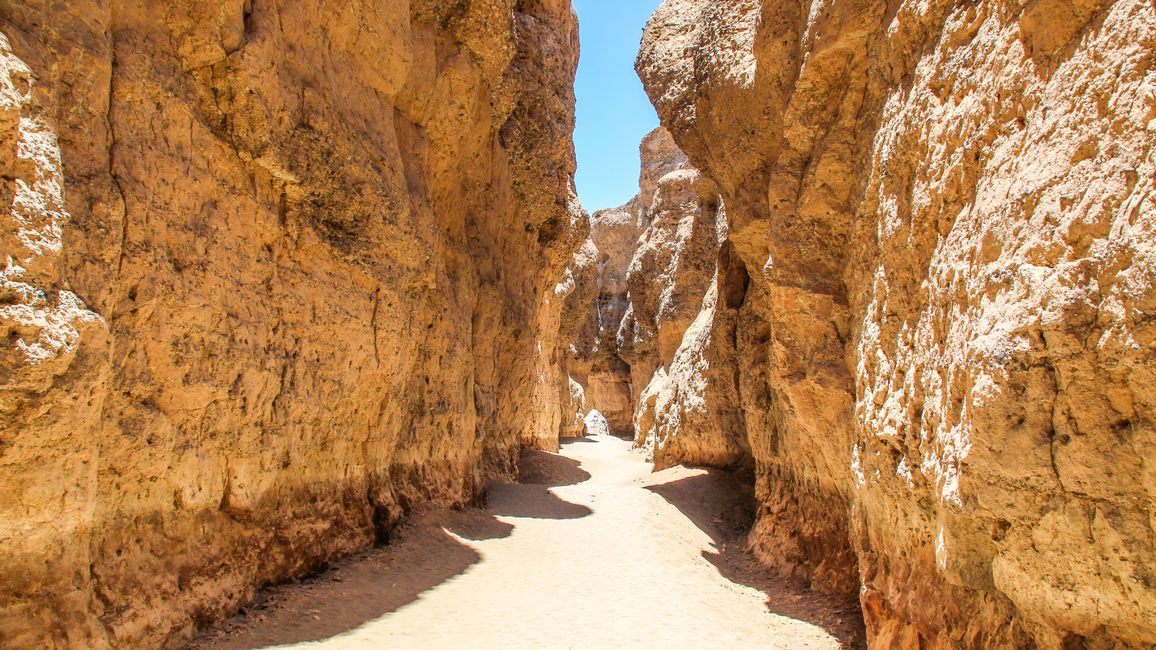
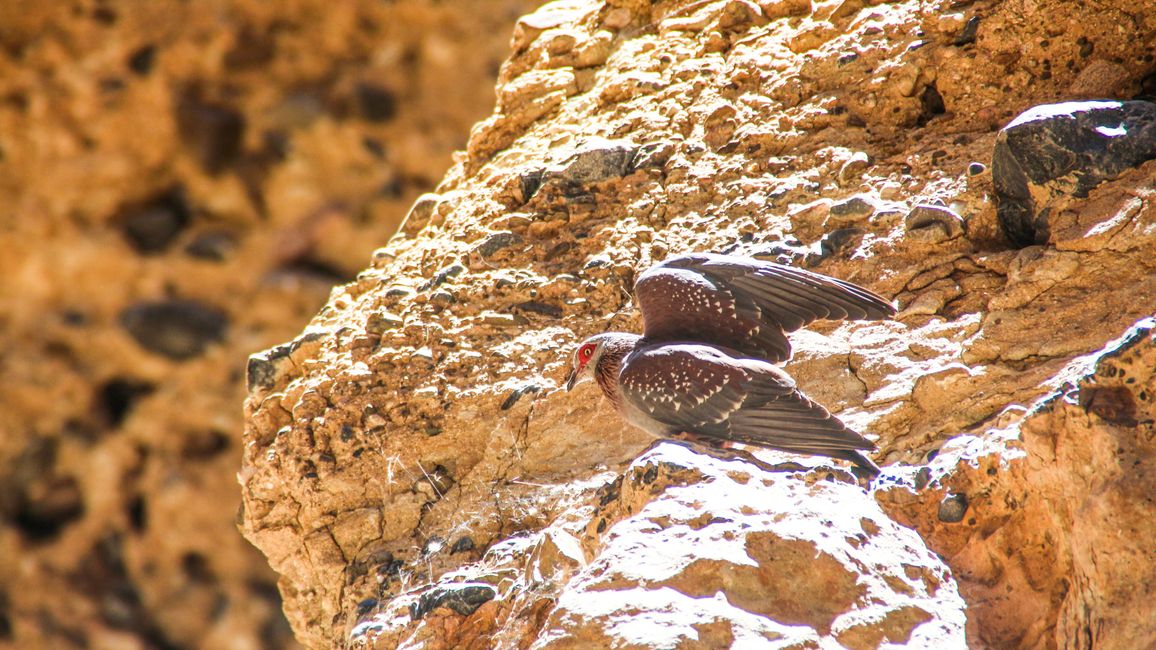
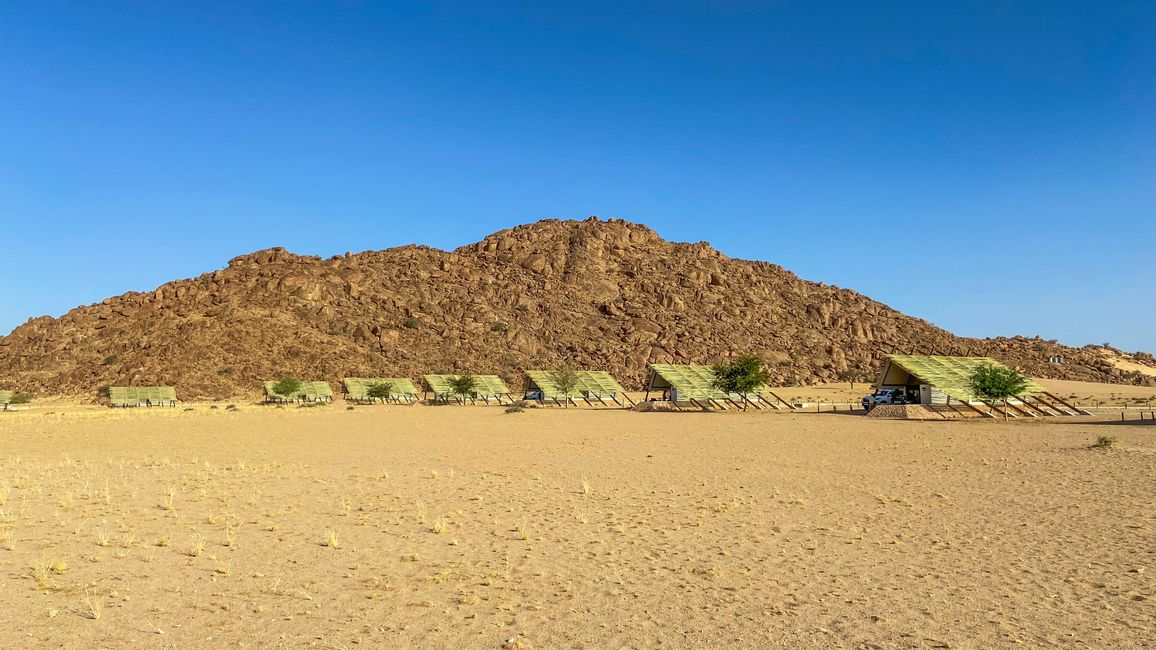
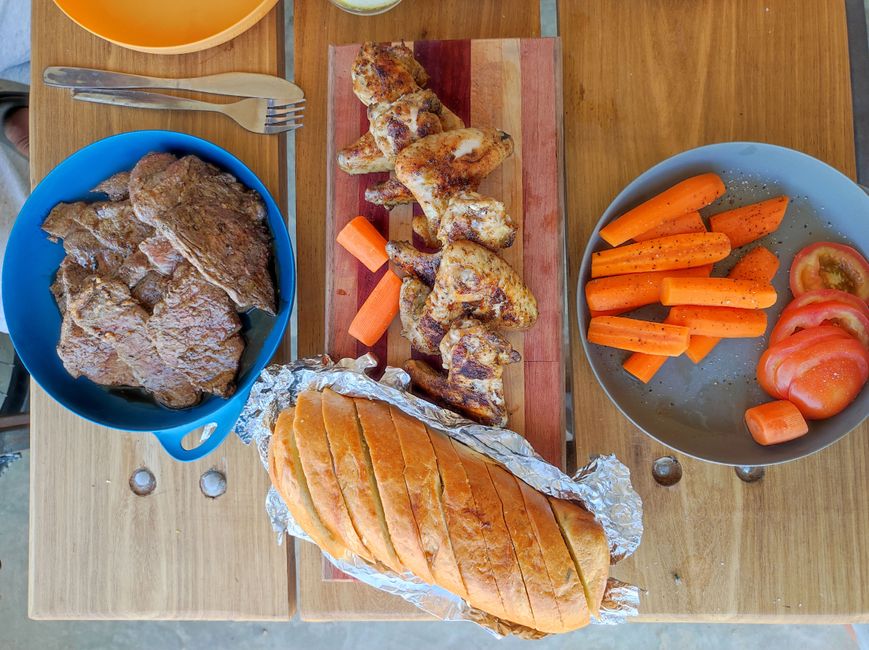
Пријавите се на билтен
Day 11, 01/07/23, Sossusvlei & Deadvlei
Rolling ochre-colored dunes, crackling white salt pans, petrified trees, endless landscapes... It's no surprise that Sossusvlei is actually Namibia's most visited landmark, although it doesn't feel crowded at all due to its remoteness and vastness.
Sossusvlei is located in the south of Namibia in the Namib-Naukluft National Park and first stands out for its remarkable abandoned beauty. While the famous acacia skeletons, trapped in white clay, are one of the best photo opportunities, the constantly changing orange dunes in the background rise challenge for the most daring out there to climb and descend. With heights of up to 300 meters, the glowing red sand dunes are not only among the tallest in the world, but also among the most attractive due to their star-shaped expansion (star dunes).
The gate opens at 6 a.m. and there is already a small traffic jam. We enter the park as car number 15 and make our way to the first parking lot.
Sossusvlei and Deadvlei are two salt pans hidden between high dunes, about 60 km from the Sesriem entrance gate of the park. The paved road ends about 5 km before Deadvlei and only 4WDs with high ground clearance are allowed further. We have already reduced the air in the tires and allow ourselves the first fun of the day: a drift over the sand track and reach the Deadvlei.
When visiting Deadvlei or Sossusvlei, it naturally means climbing some of the dunes to get a glimpse of the vastness of the place and enjoy the endless dunes from above. The best time is early in the morning when the sand is still cold, the heat is bearable, and the early sun casts dark shadows on the side of the dunes, beautifully outlining the curves of the ridges.
Big Daddy is one of the highest dunes in the Namib-Naukluft National Park. It offers the most incredible view over the Deadvlei salt pan and the surroundings. We start our climb, enjoy the play of light, and then decide to walk down to the Deadvlei salt pan at three-quarters of the way! What fun!
Deadvlei is known for its petrified gray trees that stand in contrast to the vibrant orange tones of the dunes behind. The acacia trees, scattered like eerie skeletons on the white and crackling clay floor, have been here for more than 900 years. They died after the river disappeared and were trapped due to the lack of moisture in the air, unable to decompose.
Simply an otherworldly place not to be missed. We enjoy the atmosphere, take photos, and can't get enough of looking at this incredible place.
We return to the car and after a short drive, we reach the Sossusvlei and Big Mama awaits us. This dune is located across from Big Daddy and can be climbed from the salt pan. This part of the park is visited by far fewer people, and that increases our motivation to climb another dune! Big Mama is not as high as the others, but more than a great alternative, especially if you want to see the dune and the Sossusvlei salt pan from above alone. A view that the other dunes do not offer.
Interesting detail: If you want to conquer the dunes, be prepared that the leeward side is always steeper than the windward side; the wind blows the sand grains up the gentle slope, which then fall down from the crest of the dune. Once at the top, we enjoy the incredible sight of this natural wonder for the second time this morning. These walking dunes constantly create a new spectacle; the landscape never looks the same.
After a total of 5 hours, we start our way back. I drop off Cindy and her bike at Dune 45 and drive back to the gate. Not far from there, the Sesriem Canyon drops 30 meters into the ground, offering me an impressive insight into the geological history of Namibia.
The canyon is a three-kilometer-long and only a few meters wide gorge that the Tsauchab River has flushed into the rock over millions of years. 30 million years ago, the Tsauchab brought rock and sand here, which deposited and solidified into conglomerates. Later, when the river carried more water, it eroded rock away again, creating the gorge. The erosion still occurs today, but in a reduced form, as the Tsauchab rarely carries that much water. By the way, the name is Afrikaans and means 'Six Straps'.
At the end of the gorge, there are basins that fill up during heavy rains. The first settlers gave the place this name because they tied a rope from the hides of gemsboks that they won, using six straps, and were able to draw water from these basins even when all other water sources had dried up. Towards the end, the canyon becomes shallower and turns into a wide valley that leads into the Sossusvlei over a distance of 60 kilometers.
After an hour-long hike and a few purchases, we meet again in our chalet in the afternoon. A roughly half-minute discussion leads to spending the rest of the day like yesterday, and so the pool and bar area, as well as our veranda and our braai, become our companions for the remaining hours of the day. A day that will be remembered for a long time. It will take some time to let the impressions sink in, and yes, Deadvlei and Sossusvlei are unique and absolutely impressive gems!
Пријавите се на билтен
Одговор
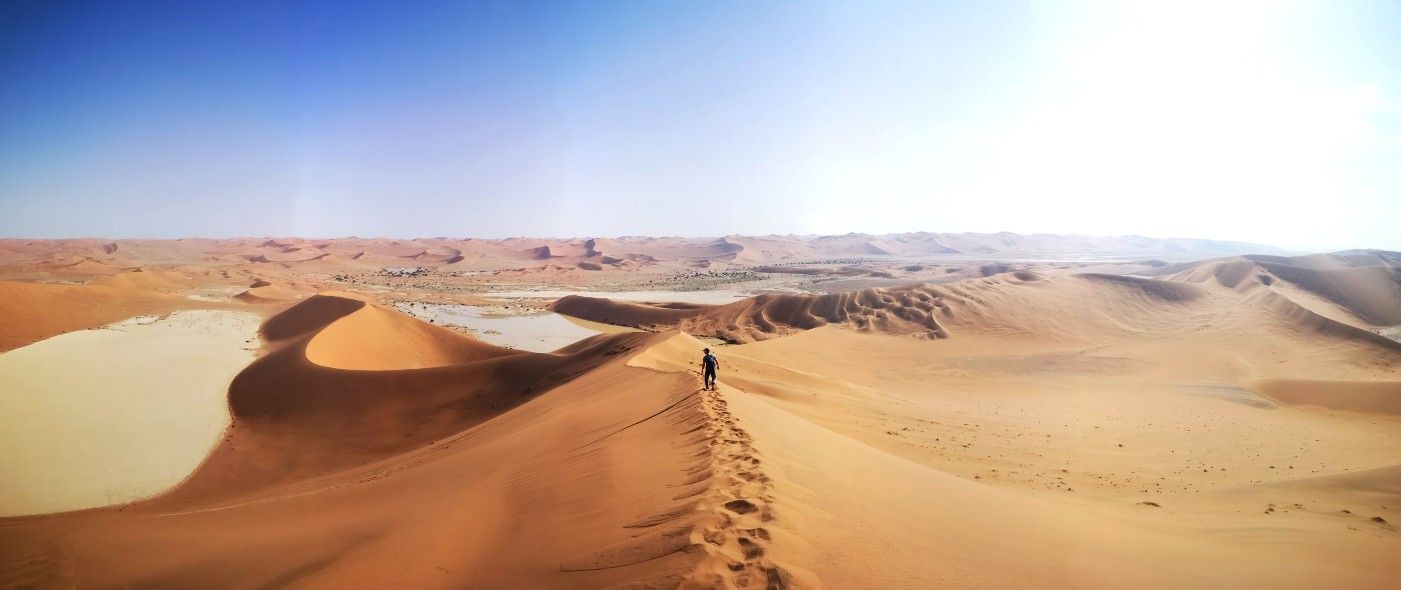
Извештаји о путовањима Намибиа

